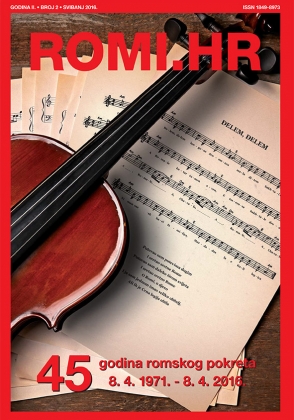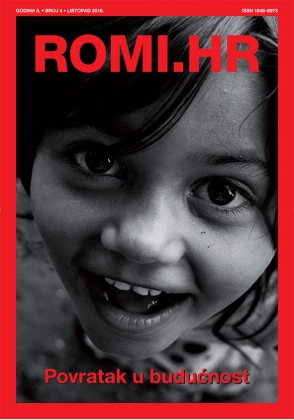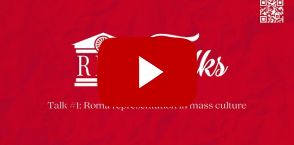Vijesti ROMI.HR
/
Međunarodni dan muzeja obilježava se 18. svibnja svake godine. Tema ovogodišnjeg Dana Muzeja je ‘Raznolikost i uključenost’. Važno je podržavati institucije koje se trude prošlost predstaviti u sadašnjosti, a sadašnjost sačuvaju za budućnost. Jedan od primjera je Muzej romske kulture u Brnu u Češkoj.
Prijevod: Milica Kuzmanović
Podrijetlo pojma muzej temelji se na 'mouseion' (museyon) koji se koristio u Grčkoj. Ova riječ znači hram posvećen Muzama. Muze dolaze iz grčke mitologije, ali to je i naziv brda u Ateni koje je bilo namijenjeno njima.
Prema Cambridge rječniku, muzej je definiran kao "zgrada u koju ljudi mogu odlaziti kako bi pogledali umjetnička djela ili druge predmete od značaja za znanost ili povijest". Kako su muzeji platforme koje za cilj imaju prenošenje kulturnog i znanstvenog stvaralaštva na buduće generacije, promatrati muzeje samo kao zgrade bilo bi površno.

Međunarodno vijeće muzeja (ICOM) je, 1951. godine, održalo sastanak pod nazivom Križarski rat za muzeje. Na tom sastanku je nastala ideja o Međunarodnom danu muzeja. Ova ideja inspirirana je okvirom za dostupnost muzeja koji je razvijen na ovom sastanku. Na Općoj skupštini u Moskvi osmišljen je godišnji događaj "koji bi za cilj imao dalje objedinjavanje kreativnih težnji i napora muzeja i skretanje pažnje svjetske javnosti na njihovu aktivnost. Posljedično je, 1977. godine, proglašen Međunarodni dan muzeja.
Uloga muzeja u društvu se mijenja. Muzeji, nekad stacionarne institucije, postaju interaktivnijim, više orijentiranim na publiku i društvo, sposobnijim za prilagodbu i pokret. I dalje njegujući svoje glavne zadaće kao što su prikupljanja, očuvanja, komunikacije, istraživanja i izlaganja, muzeji su promijenili metode kojima to postižu kako bi bili bliži zajednicama kojima služe. Muzeji se pretvaraju u kulturne centre koji funkcioniraju kao platforme na kojima kreativnost susreće informacije, a posjetitelji također mogu stvarati, dijeliti i međusobno komunicirati.
Istodobno s povećanjem svoje uloge kao kulturnih centara, muzeji pronalaze nove načine odavanja počasti svojim kolekcijama, povijesti i baštini, stvarajući tradicije koje će donijeti nova značenja budućim generacijama, te privlače sve raznolikiju i suvremeniju publiku na globalnoj razini.

Muzej romske kulture u Brnu nastao je kao rezultat potreba te raznolike i suvremene publike. Muzej je osnovan na inicijativu romskih intelektualaca, na čelu s Janom Horváthovom 1991. godine, u razdoblju slobode nakon Baršunaste revolucije. Glavna galerija muzeja fokusirana je na dokumentiranje romske kulture i povijesti. No, muzej prati nove trendove i potrebe društva, te otvara svoja vrata i za privremene postavke o kulturnim aspektima Roma poput uređenja interijera, odjeće i nakita, likovne umjetnosti, pisanih materijala, postera i pozivnica itd.

World Museum Day is celebrated on 18th of May every year. With this year’s theme of the day, Diversity and Inclusion, it is important to celebrate the institutions which are trying to transfer yesterday to today and today to future. Such as The Museum of Romani Culture in Brno, Czech Republic.
Its origin is based on 'mouseion' (museyon) used in Greek. This word means the temple dedicated to the "Muses", from Greek mythology, and name of the hill reserved for them in Athens.
According to Cambridge Dictionary, it is defined as "a building where people can go to view works of art or other objects of interest to science or history”. But seeing museums only as building would be a shallow perception. Because museums are the platforms, aiming at passing the cultural and the scientific accumulation to the upcoming generations in order to help the growth of this progress.
In 1951 meeting called Crusade for Museums by International Council of Museums (ICOM) and the idea for International Museum Day was inspired by the framework for museum accessibility that was developed at this meeting. During the General Assembly in Moscow to create an annual event “with the aim of further unifying the creative aspirations and efforts of museums and drawing the attention of the world public to their activity. ” So, 1977 International Museum Day was established.
The role of museums in society is changing. The museums, once stationary institutions, make themselves more interactive, audience-oriented, society-oriented, flexible, adaptable and mobile. While preserving their primary duties of gathering, conservation, communication, research and display, museums changed their methods to be closer to the communities they serve. Museums turn into cultural centers that function as platforms where creativity meets information, visitors can also produce, share and interact with each other.
As museums gradually increase their roles as cultural centers, they find new ways to honor their collections, their history and heritage, create traditions that will create new meanings for future generations, and attract an increasingly diverse and contemporary audience at the global level.

The Museum of Romani Culture in Brno has born with the needs of that diverse and contemporary audience. The Museum founded with the initiative of Roma intellectuals
Led by Jana Horváthová in 1991 in the period of freedom after Velvet Revolution. The main gallery of the museum is focused on documenting the Romani culture and history. Yet museum follows the new trends and needs in society and open its doors for short time exibitions about cultural aspects of Roma such as interior furnishings, clothing and jewellery, fine arts, written materials, posters and invitations etc.













